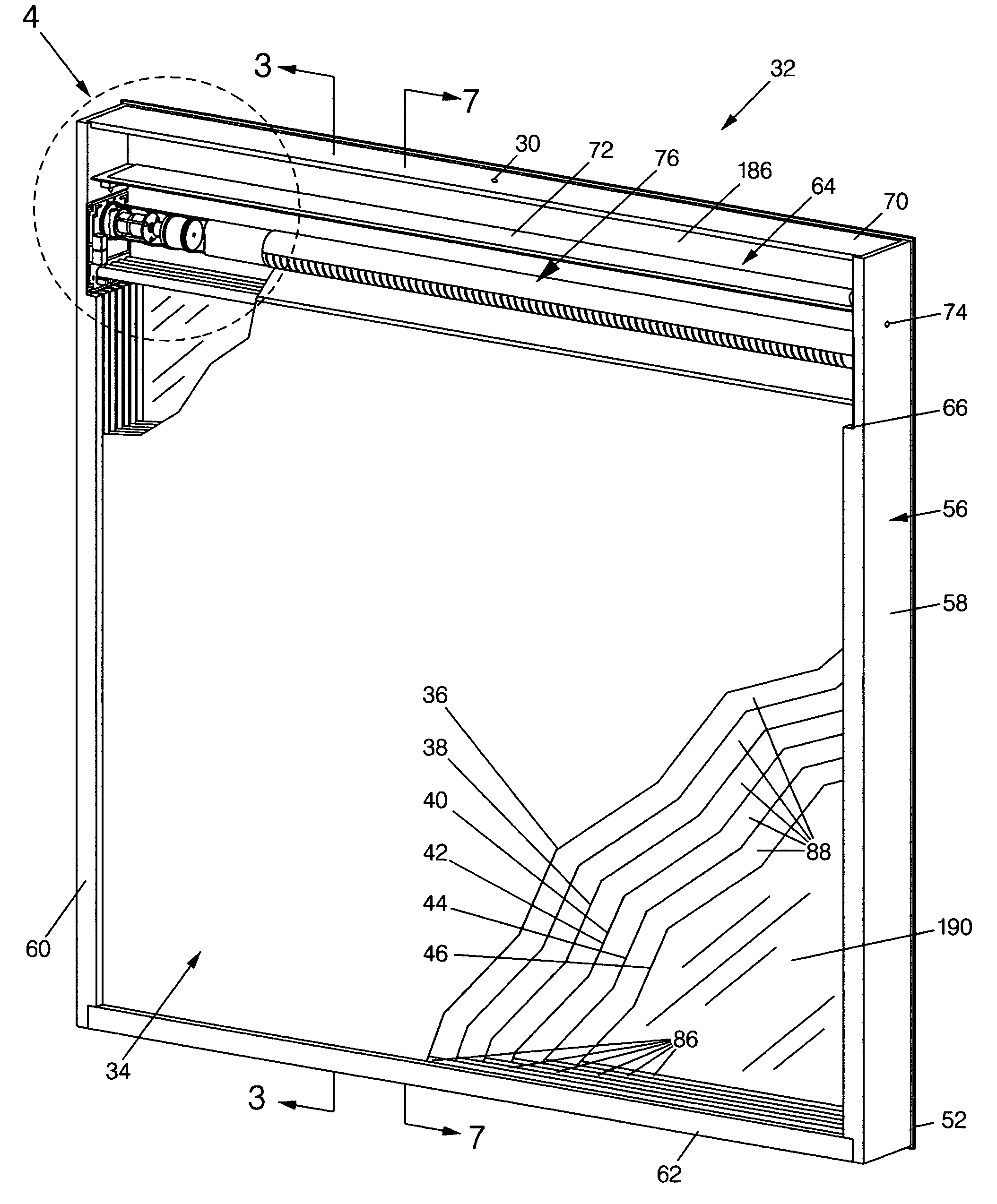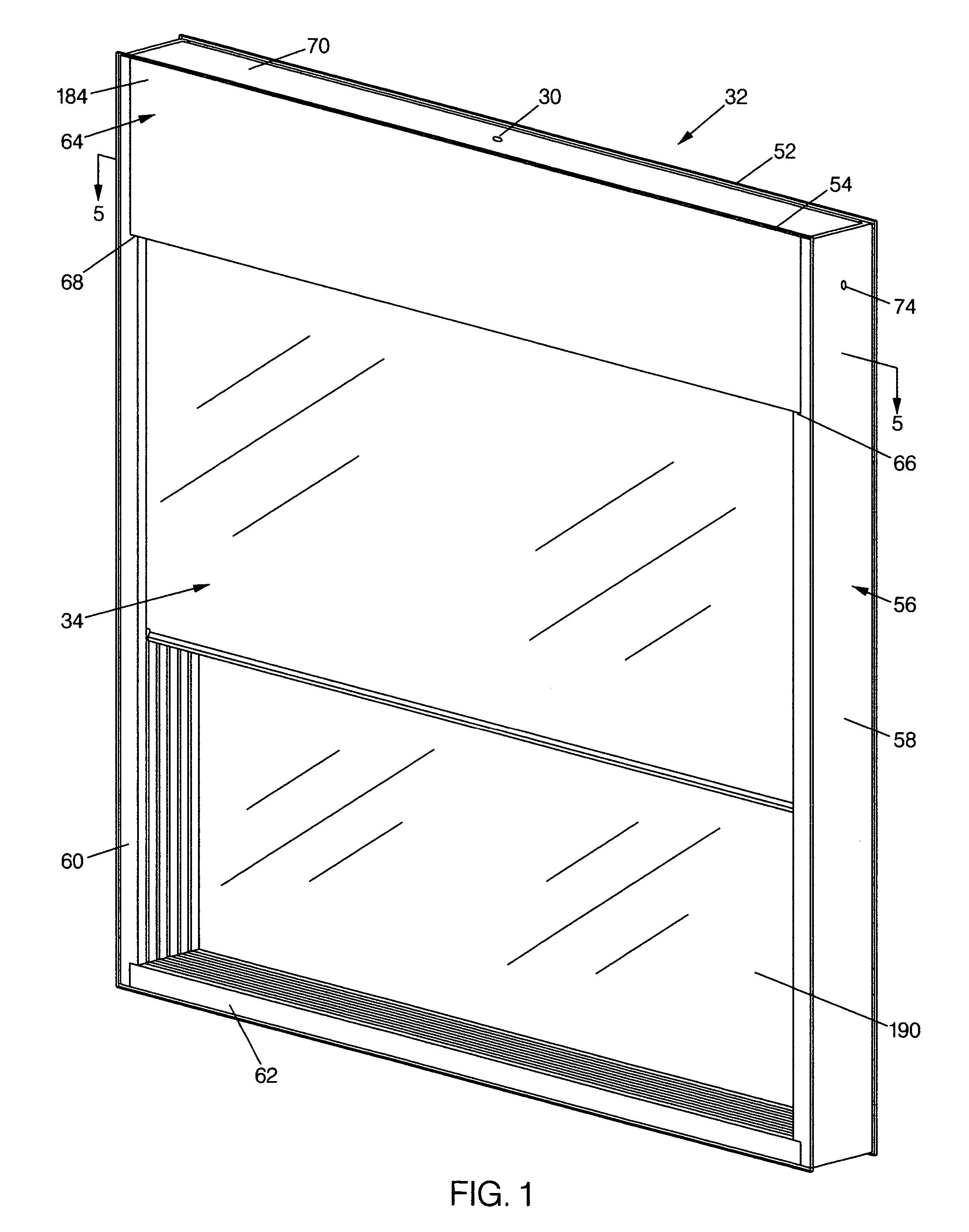Multi-layered film window system
a film window system and multi-layer technology, applied in the direction of door/window protective devices, shutters/movable grilles, wing accessories, etc., can solve the problems of limited internal cover effectiveness, difficult to construct weather-tight, reliable, movable and reliable covers, etc., to promote solar heating and reduce solar gain
- Summary
- Abstract
- Description
- Claims
- Application Information
AI Technical Summary
Benefits of technology
Problems solved by technology
Method used
Image
Examples
Embodiment Construction
[0054]As generally noted above, the invention seeks to provide a sealed, glazed window assembly 32 having two layers of glass 52 and 54 or other suitably transparent material separated by several intermediate film layers 36–46. The assembly 32 is designed to demonstrate an insulation R-value on the order of a frame wall (e.g. R18 to R20). In contrast, a typical frame wall R-value of 19 is achieved with fiberglass bats fitted in a 6″ solid, opaque framed wall.
[0055]The significance of the capabilities of the assembly 32 can be appreciated upon consideration of the applicable physics relating to multi-layered glazed assemblies and available multi-layered windows. The physics of the assembly 32 derives from basic considerations that glass is transparent in the visible spectrum and a layer of glazing transmits approximately 95% of incident sunlight. A single layer of glass, which has a through-glass resistance of about 0.02 hrft2F / BTU has a measured R-value of about 1.0 hrft2F / BTU. This...
PUM
 Login to View More
Login to View More Abstract
Description
Claims
Application Information
 Login to View More
Login to View More - R&D
- Intellectual Property
- Life Sciences
- Materials
- Tech Scout
- Unparalleled Data Quality
- Higher Quality Content
- 60% Fewer Hallucinations
Browse by: Latest US Patents, China's latest patents, Technical Efficacy Thesaurus, Application Domain, Technology Topic, Popular Technical Reports.
© 2025 PatSnap. All rights reserved.Legal|Privacy policy|Modern Slavery Act Transparency Statement|Sitemap|About US| Contact US: help@patsnap.com



